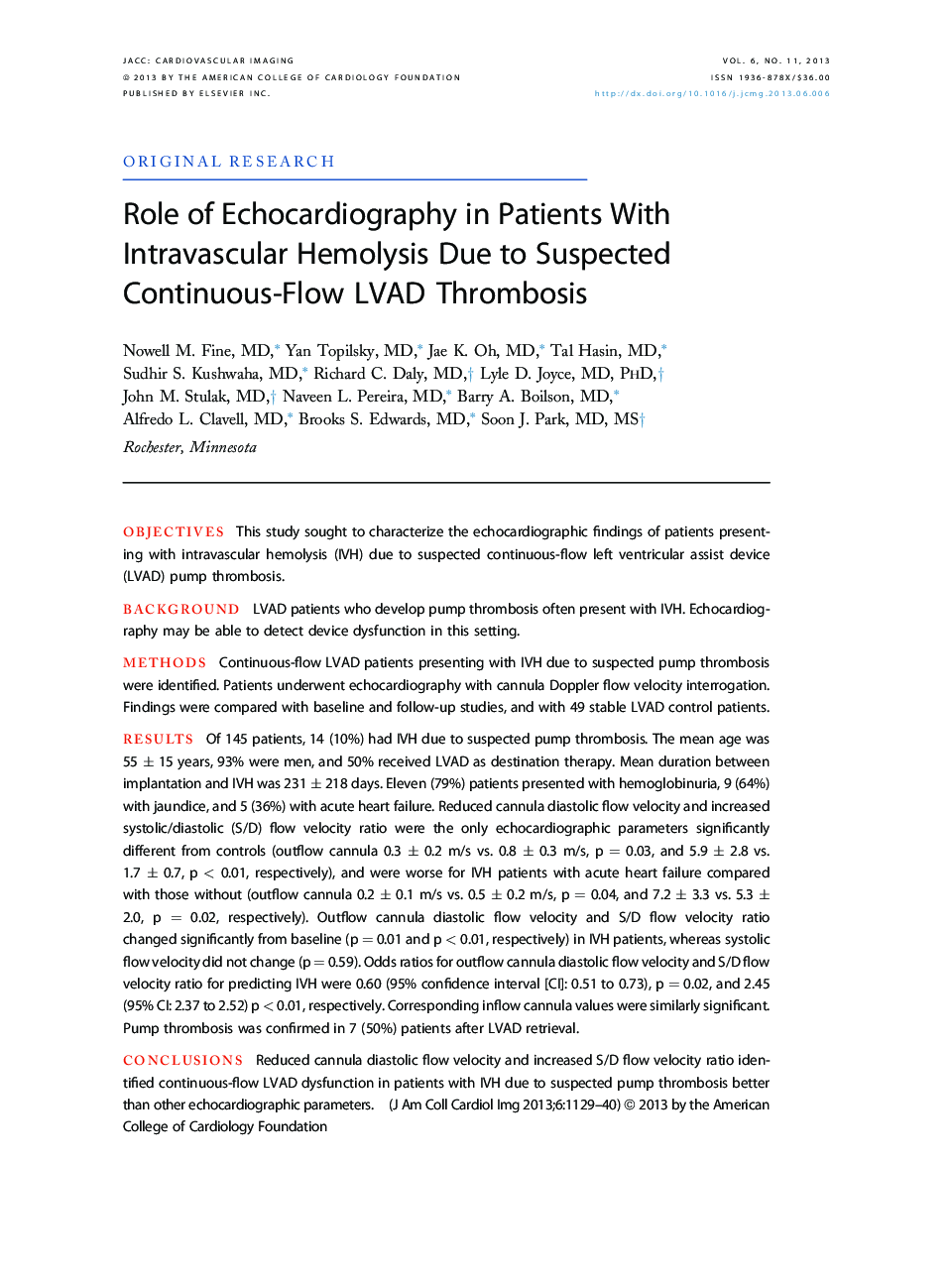| Article ID | Journal | Published Year | Pages | File Type |
|---|---|---|---|---|
| 2937778 | JACC: Cardiovascular Imaging | 2013 | 12 Pages |
ObjectivesThis study sought to characterize the echocardiographic findings of patients presenting with intravascular hemolysis (IVH) due to suspected continuous-flow left ventricular assist device (LVAD) pump thrombosis.BackgroundLVAD patients who develop pump thrombosis often present with IVH. Echocardiography may be able to detect device dysfunction in this setting.MethodsContinuous-flow LVAD patients presenting with IVH due to suspected pump thrombosis were identified. Patients underwent echocardiography with cannula Doppler flow velocity interrogation. Findings were compared with baseline and follow-up studies, and with 49 stable LVAD control patients.ResultsOf 145 patients, 14 (10%) had IVH due to suspected pump thrombosis. The mean age was 55 ± 15 years, 93% were men, and 50% received LVAD as destination therapy. Mean duration between implantation and IVH was 231 ± 218 days. Eleven (79%) patients presented with hemoglobinuria, 9 (64%) with jaundice, and 5 (36%) with acute heart failure. Reduced cannula diastolic flow velocity and increased systolic/diastolic (S/D) flow velocity ratio were the only echocardiographic parameters significantly different from controls (outflow cannula 0.3 ± 0.2 m/s vs. 0.8 ± 0.3 m/s, p = 0.03, and 5.9 ± 2.8 vs. 1.7 ± 0.7, p < 0.01, respectively), and were worse for IVH patients with acute heart failure compared with those without (outflow cannula 0.2 ± 0.1 m/s vs. 0.5 ± 0.2 m/s, p = 0.04, and 7.2 ± 3.3 vs. 5.3 ± 2.0, p = 0.02, respectively). Outflow cannula diastolic flow velocity and S/D flow velocity ratio changed significantly from baseline (p = 0.01 and p < 0.01, respectively) in IVH patients, whereas systolic flow velocity did not change (p = 0.59). Odds ratios for outflow cannula diastolic flow velocity and S/D flow velocity ratio for predicting IVH were 0.60 (95% confidence interval [CI]: 0.51 to 0.73), p = 0.02, and 2.45 (95% CI: 2.37 to 2.52) p < 0.01, respectively. Corresponding inflow cannula values were similarly significant. Pump thrombosis was confirmed in 7 (50%) patients after LVAD retrieval.ConclusionsReduced cannula diastolic flow velocity and increased S/D flow velocity ratio identified continuous-flow LVAD dysfunction in patients with IVH due to suspected pump thrombosis better than other echocardiographic parameters.
